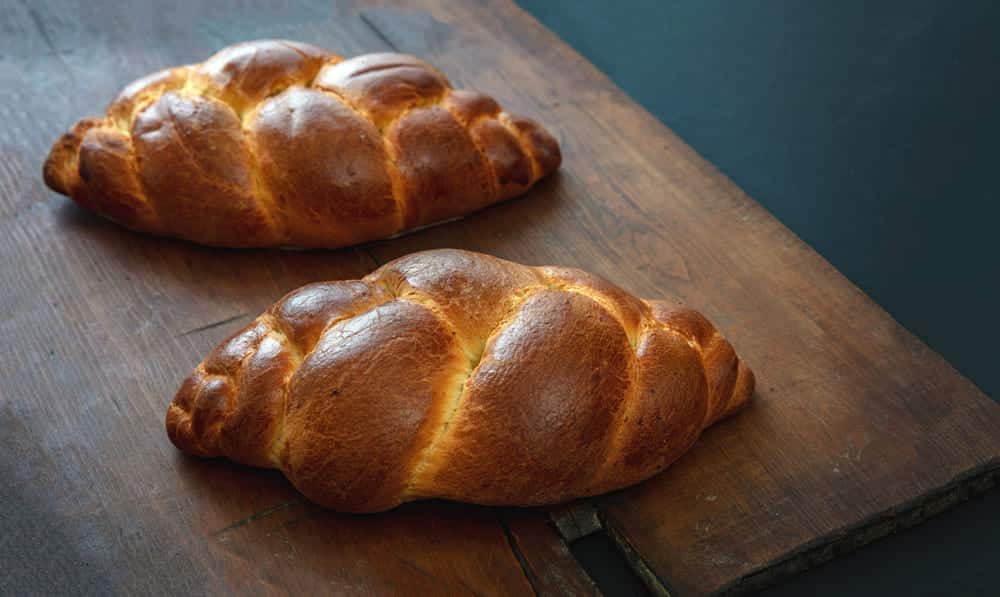
In any kitchen, bread and at least one of its many different types can easily be found. That’s because most of its types are delicious, and a lot of them go great with specific kinds of foods. Lots of people are usually only familiar with some of the more common types of bread which are usually eaten as a part of breakfast and other casual meals throughout the day.
But there are many other great types too that some don’t know about. Two of the best and most underrated of the many types available out there are tsoureki and challah.
Many believe them to be quite similar in different ways, and this belief is something that is justifiable enough. But they definitely aren’t completely identical to one another and certainly aren’t interchangeable.
That’s because there are more than enough distinctions between the two which make them completely different from one another. Here is our comparison between the two that highlights these differences and even some specific similarities between the two that cooks should know about.
Tsoureki vs Challah
Type of Bread and Origins
The very first aspect in which we’ll be comparing the two breads in question are their origins, along with the specific type of bread they are. Challah is in fact a holiday bread eaten throughout specific times of the year by people with certain beliefs.
It originates from Eastern Europe and is mainly associated with the Jewish community, being a major part of some of the most important Jewish holidays out there. While challah also refers to the dough offering made during some of said holidays, the one we’re referring to is obviously the bread type.
Tsoureki is also a type of holiday bread, but that’s really the only similarity that the two have in this specific regard. It originates from Greece. The beautiful European country is usually the main place where Tsoureki is so popular, as it is a major part of their traditions, especially around Easter holidays.
While it may be the most popular inside of Greece, it is certainly a part of traditions and religion throughout the rest of the world as well, but mainly only in the states and/or countries where Greek communities reside.
Texture
Now that users are familiar with their origins and exactly why these two types of delicious breads are as important as they are, we get down to the eating aspect. The challah comes with a very rich texture that expands upon its taste, while also being quite spongey which makes it quite pleasing to eat not only because of its taste but because of the way it feels.
This texture can be changed a little bit by adding certain extra ingredients on top of the challah during the preparation phase, like poppy seeds and more.
As for the texture of the tsoureki, it’s certainly similar to the challah’s in the sense that it feels quite great. But coming down to the specifics, the tsoureki has a very soft texture that’s actually much fluffier than it is spongey.
That isn’t all though, as there are other noticeable traits in the texture of this bread as well. For example, it’s quite stringy which adds to the delicateness of it. There’s also the somewhat soft but simultaneously crispy feel of the brown crust in the tsoureki.
Taste and Ingredients
Both the tsoureki and the challah might be different in terms of taste and texture, but there are actually lots of similarities between the two when it comes to ingredients. The main basic ingredients of the two types are actually almost identical. Both use yeast, butter, eggs, flour, milk, and sugar. However, one major difference in the recipe of tsoureki is that it also features a spice called mahlepi and usually some almonds too.
The challah is soft, sweet, and quite delicious. If you’re looking to get an idea of how it tastes, the best way to do so would be to compare the taste to brioche bread, as both area most identical in this regard. While tsoureki is a little similar too, it is a bit more sweet and sharp thanks to the extra spice which was mentioned previously.